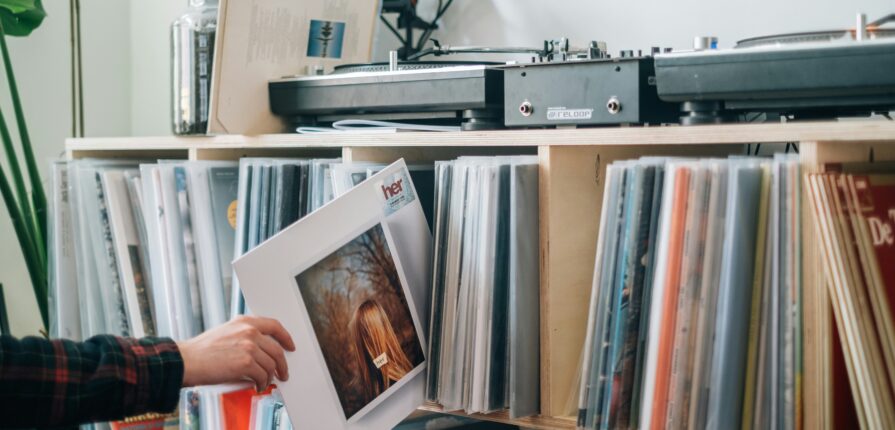Album covers have long served as a canvas for artistic expression, but some have pushed boundaries to the point of controversy. From provocative imagery to bold statements, these covers have sparked outrage, prompted debates, and even led to censorship. Below is a look at some of the most controversial album covers in music history and their impact on culture.
– Thursday, October 31
- The Rolling Stones – Sticky Fingers (1971)
Featuring a working zipper on the cover, “Sticky Fingers” not only showcased the band’s edgy aesthetic but also raised eyebrows with its overt sexual imagery. The original design by Andy Warhol was provocative for its time, symbolizing the band’s rebellious spirit and the hedonistic lifestyle of the 1970s. Its boldness led to discussions about sexuality in rock music, challenging norms of the era. - The Sex Pistols – Never Mind the Bollocks, Here’s the Sex Pistols (1977)
The Sex Pistols’ debut album cover was a bold declaration of punk rock’s anti-establishment ethos. The use of the word “bollocks,” considered vulgar in the UK, led to widespread controversy and even bans from certain stores. The cover’s design was intentionally disruptive, challenging traditional aesthetics and norms, which made it emblematic of the punk movement. - N.W.A – Straight Outta Compton (1988)
This groundbreaking album cover, featuring a stark black-and-white design, encapsulated the raw and confrontational nature of gangsta rap. The explicit imagery and lyrics sparked outrage among law enforcement and conservative groups, who viewed it as glorifying violence and criminal behavior. However, it also ignited conversations about race, socio-economic issues, and freedom of expression in music. - Madonna – Like a Prayer (1989)
Madonna’s “Like a Prayer” cover featured religious symbols and imagery that ignited a media firestorm. Critics accused her of blasphemy, particularly with the incorporation of a burning cross. The outrage led to protests and boycotts, but it also prompted important dialogues about religion, sexuality, and feminism in popular culture. - Sinead O’Connor – I Do Not Want What I Haven’t Got (1990)
Sinead O’Connor’s cover featured her shaved head, a bold statement against traditional notions of beauty and femininity. It challenged societal norms and provoked discussions about identity and self-expression in a male-dominated industry. Her decision to present herself authentically resonated with many and became a symbol of empowerment. - Cannibal Corpse – Butchered at Birth (1991)
Known for their graphic imagery, Cannibal Corpse took shock value to an extreme with this album cover. Depicting a gruesome scene of violence, it drew significant backlash and even led to the album being banned in several countries. The controversy sparked discussions about censorship in music and the limits of artistic expression, especially in the realm of extreme metal. -
The Game – The Documentary (2005)
Featuring a striking image of The Game’s face with a gun tattoo and the American flag, this cover drew attention for its explicit political commentary and association with gang culture. It sparked conversations about race, violence, and the American Dream, positioning the album as a pivotal piece in the discourse of hip-hop and societal issues.- Kanye West – Yeezus (2013)
Kanye West’s “Yeezus” cover was minimalist, featuring only a red background and a clear jewel case. While it may not seem controversial at first glance, its starkness and lack of conventional imagery sparked debates about the nature of art and commercialism in music. The cover’s simplicity challenged the expectations of what an album cover should convey, leading to discussions about authenticity in the digital age.
9. Kanye West – The Life of Pablo (2016)
The album cover for The Life of Pablo featured a chaotic collage with disjointed imagery, including a photo of a family juxtaposed with an image of a model wearing a thong. The unusual, almost fragmented design led to criticism for its perceived lack of cohesion and taste, but it also sparked debates on artistic interpretation and whether the chaotic visual represented the turbulent and experimental nature of Kanye’s music at the time. The provocative imagery and text (“Which / One”) invited analysis, making the cover a contentious piece in his discography. - Pusha T – DAYTONA (2018)
The cover of DAYTONA featured a photo of Whitney Houston’s bathroom, filled with drug paraphernalia and other chaotic items. The image, which was reportedly purchased by Kanye West for $85,000, stirred controversy due to its connection with the late singer’s struggles with substance abuse. Critics accused Pusha T and Kanye West of exploiting Houston’s tragic story for shock value, while others saw it as a commentary on fame, addiction, and the dark side of the music industry.
Controversial album covers serve as more than just visuals; they are statements that reflect cultural tensions, artistic freedom, and societal norms. While some have faced censorship and backlash, they have undeniably opened doors for critical discussions in music and beyond.
These provocative artworks challenge listeners to confront their values, beliefs, and the ever-evolving landscape of artistic expression. As music continues to evolve, one can only wonder what the next wave of album covers will bring.
- Kanye West – Yeezus (2013)


